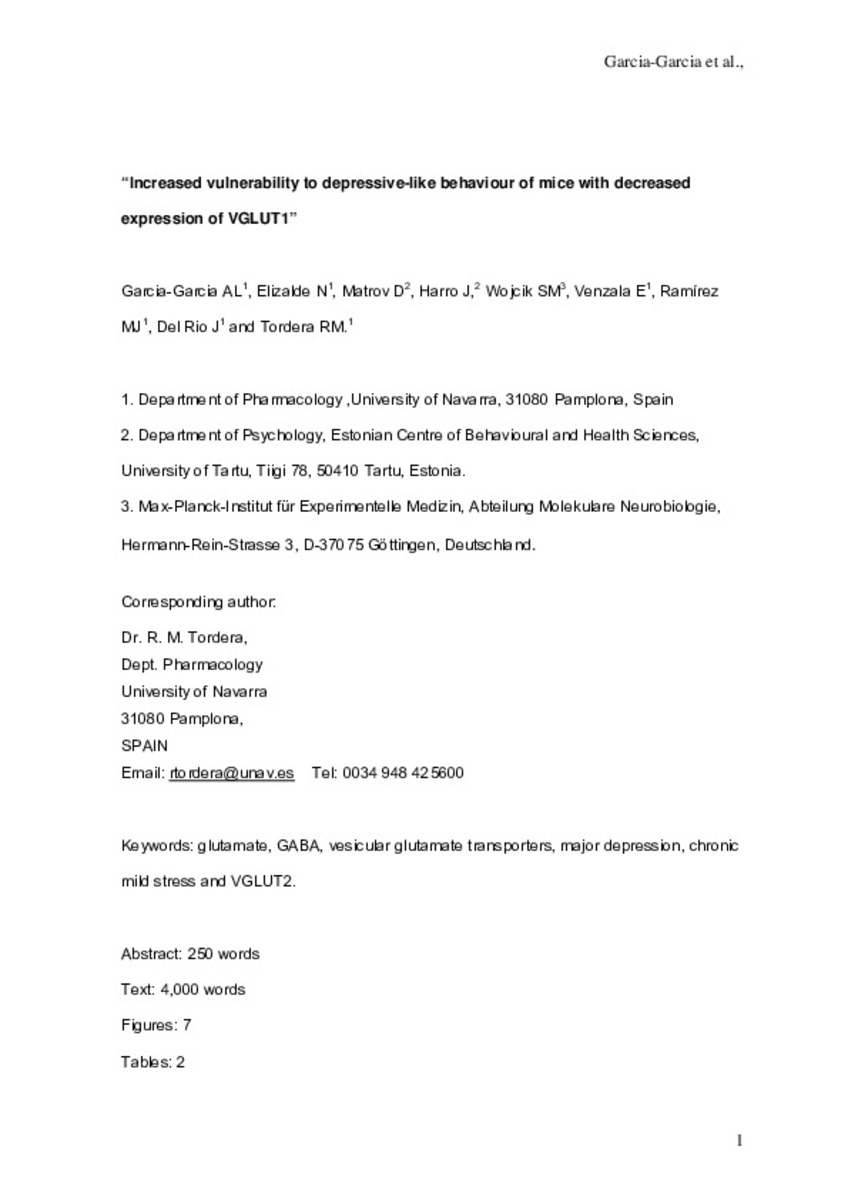Increased vulnerability to depressive-like behaviour of mice with decreased expression of VGLUT1
Palabras clave :
Glutamate
GABA
Vesicular glutamate transporters
Major depression
Chronic mild stress
Fecha de publicación :
2009
Cita:
Garcia-Garcia AL, Elizalde N, Matrov D, Harro J, Wojcik SM, Venzala E, et al. Increased vulnerability to depressive-like behavior of mice with decreased expression of VGLUT1. Biol Psychiatry 2009 Aug 1;66(3):275-282.
Aparece en las colecciones:
Estadísticas e impacto
0 citas en

0 citas en

Los ítems de Dadun están protegidos por copyright, con todos los derechos reservados, a menos que se indique lo contrario.








